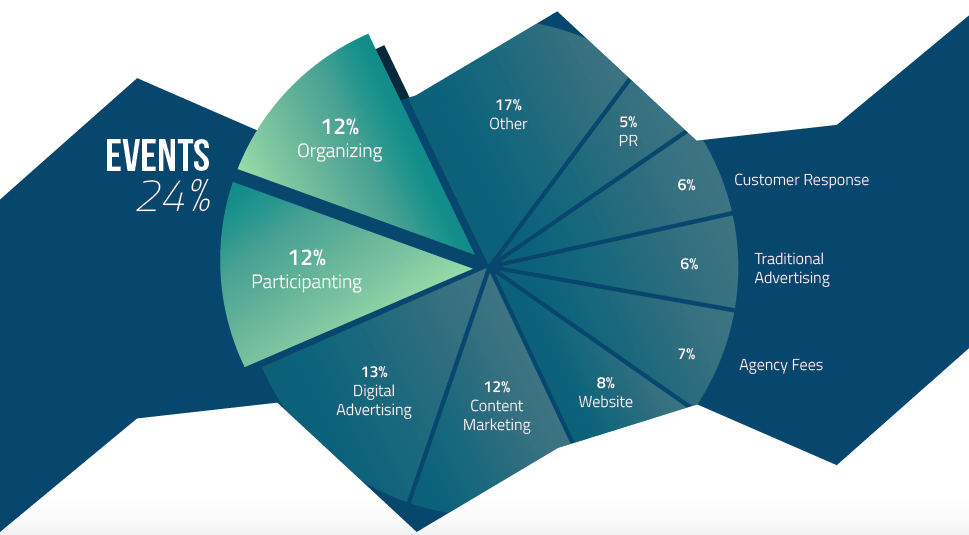Transcript of Traditional PR is Still a Fabulous Way to Stand Out written by John Jantsch read more at Duct Tape Marketing
Transcript
John Jantsch: This episode of The Duct Tape Marketing Podcast is sponsored by Ahrefs, the SEO tool set that I use every single day. Listen into this episode because I’m going to tell you how you can win a full year subscription, over $2,000 value on this amazing tool. Check it out.
Hello and welcome to another episode of The Duct Tape Marketing Podcast. This is your host John Jantsch, and my guest today is Christina Nicholson. She’s a former TV reporter and Anchor who is on the other side of the desk these days, helping small businesses tell their stories as the founder of Media Maven. Christina, thanks for joining me.
Christina N.: Thanks so much for having me.
John Jantsch: PR’s one of those terms, I mean I’ve been doing this a really long time. It’s evolved greatly, the role of the PR firm, the role of the PR practitioner. Where in your opinion, does PR fit into the marketing mix today? I think a lot of small businesses, when they think of PR, all they think of is media relations.
Christina N.: Right, and that’s usually what people reach out to a PR firm for, is for the media relations aspect. There is a lot under the PR umbrella, but that’s what sticks out in people’s mind, is getting on TV, or in newspapers, or in magazines. But there really is a lot more to it than that, because what happens after you earn that coverage? If somebody’s going to click on that link that you earned online and go back to your website, is your website user friendly, is it loading fast, do you have a way to capture leads on your website? Or if you’re sending people to a brick and mortar store, are you ready to handle the traffic?
There’s so much more to it than just earning the media, but earning that media is a big part of PR for sure.
John Jantsch: Back in the day when I used to pitch publications, there were Editors, and Assistant Editors, and there were people that were always working on stories, and listening to story pitches. Boy, most publications that are hanging around, particularly print publications it seems like, I mean they are so short staffed today that, how do you even get on their radar?
Christina N.: Yeah, I think the secret is to hand them everything they need on a silver platter. They are definitely over worked and underpaid, and they’re doing everything. I know in my last TV market, and it was a big market. It was Market 16, it was Miami. Many days I was out there with my camera and tripod, doing my own interviews, doing my own video work, editing my own stuff, and people think that’s what you just do in small markets, working your way up. But now, really, anybody in the media, they are doing any job just to get their job done really. What I tell people is to literally give the media everything they want on a silver platter.
When I book a client on TV for a segment, I write the pitch, I make sure they have the lower thirds, I write the web script, I send the web scripts to the Web Editor, I send the TV scripts to the Producer, because when you do all of that work for them, they’re not only more likely to book you because you’ve done the work, but they’re more likely to invite you back because you understand what their job is, and you are helping them do their job.
John Jantsch: Yeah, I’m even seeing what I would call mainstream publications, accepting photographs. It used to be, “No, no, we have to shoot all of our own photos.” But now video and photos, everything, they’ll take everything won’t they?
Christina N.: Yeah, they will. That’s why it’s good to have that stuff. Like I always tell people, before you reach out to anybody, make sure you have all of your ducks in a row, and all of your I’s dotted, and T’s crossed. I know a lot of times when I was pitched as a reporter, I would get something. I’d say, “Okay, let’s do this.” I would call them, and they wouldn’t be ready. They needed to prepare, they needed to get this, or they needed to get that. I always advise people, as soon as you hit send on that email, or you pick up the phone to call, you make sure you have everything you can possibly need in order, and ready to hand over. Nine times out of 10, the early bird gets the worm. It’s not necessarily the person with the best story, it’s the person who can deliver the goods the quickest.
John Jantsch: Let’s say I’m listening to this, and I’m thinking, “Yeah, I should hire a PR person.” Somebody comes to you and says, “We want to get media coverage.” What’s kind of your way to prepare them, to see if they have what it takes, to even see if they have a story worth pitching? I mean, how do you kind of go to work to make that analysis?
Christina N.: Well first I make sure that they understand, they know what PR is. Because a lot of-
John Jantsch: Yeah, “Get me on Oprah, get me on Oprah.” That’s what it is, right?
Christina N.: … Right, a lot of people just don’t get it. They think if they hire somebody and they want to be in Forbes, that means they’re going to get in Forbes.
John Jantsch: Right.
Christina N.: That’s not how it works. I use the analogy of, it’s like going to a doctor to cure your cancer. There’s no guarantee the doctor’s going to do that, but he’s going to use his expertise, and his knowledge, and what he’s done before, and what’s worked before, to try to cure your cancer. It’s the same with earning media. You can hire me and you can have these great big goals, but at the end of the day, if they don’t want you and they don’t like your story, they’re not going to put you in their publication, or on their air. I do a lot of client education to make sure they understand what they’re signing up for, before we move forward at all. Then we talk about their goals, because like you said, everybody wants Oprah, everybody wants the big national stuff. Which, makes sense. Why would you not?
But then you’re competing with literally millions of others. Let’s start with your goal. If your goal in a small town is to get people walking through your doors, Oprah may not help that much. Your local newspaper may do a better job of that than Oprah would. I start with the goals, and then I give them realistic expectations because a lot of people don’t understand the industry. It is complicated, and it is always changing. I think client education is huge, especially when it comes to PR today.
John Jantsch: A lot of people do like to, they kind of get this wild hair, and they want to get this big home run story. But, truthfully to use it as a channel, I think you have to look at it as something you would plan, that you would execute on consistently. At least that’s my view. How do you go about kind of helping somebody create a PR plan as maybe part of their overall marketing plan?
Christina N.: Yeah, well first like I said, you always want to start with the goal. Do you want more business, do you want to build your email list, do you want people shopping online, what is your goal? Then we build out from there. I always, even if you want the big stuff, I always like to start local because you need a newsworthy story. Nobody’s going to give you a free commercial, nobody’s going to promote you just to promote you, to give you business. It doesn’t work that way. This is earned media, so you need to earn it. It’s not easy. I always start local, because that is where you are more newsworthy, because you are a local person, so you have that local tie in.
The second thing I do is I try to put some kind of time table on it. You don’t want to pitch a story that can be done today, or it can be done next month, or it could be done a year from now. You want to give a journalist a reason to do that story now. If they don’t have a reason to do it now, they’re going to do other, more timely stories, and put you on the back burner. I would start local, and find a timely thing to include in the pitch, and then another thing to include is any relevance to anything that’s happening locally or nationally. For example, this is a hard client to pitch, somebody who does wills and trust. It’s not a very sexy topic.
John Jantsch: Right.
Christina N.: But when Prince died, the big news was that he didn’t have a will. That’s your opportunity as an attorney, to pitch the media and say, “Hey look, let me tell you what this means, let me explain this to you, let me dumb it down and tell you what could happen here for Prince, and how you could avoid this in your life, or your family’s life.” When you find some kind of relevance that’s already being talked about to tie your brand into, that’s another great strategy.
John Jantsch: Hey, wanted to remind you, this episode of The Duct Tape Marketing Podcast is sponsored by Ahrefs, and I’m giving away a full year subscription to this awesome tool that helps you grow your search traffic, research your competitors, and monitor your niche. I use this tool every single day, one of my favorite ways to use it is to learn why competitors are ranking so high, and what I need to do, to outrank them. There’s so many great back link tools, search tools, keyword research tools, rank tracking, all built into this tool, and that’s why I love it so much.
If you want to enter to win a full year of this tool, that’s like $2,000 value, go to Duct Tape Marketing Podcast, and find this episode. If you’re listening to this, if you’re on the page, the links are down below. But you’re going to subscribe to the podcast, you are going to maybe do a little tweet to get some extra bonus entries, and in a couple weeks we will pick a winner, and we’ll let you know if you won a full year. Go check it out.
Personal branding for kind of solo-preneurs maybe, or even that attorney that you’re talking about has become a very big piece of marketing. What role does PR play in your mind, in trying to help people build kind of personal brand authority?
Christina N.: I think it’s always important to promote yourself as an expert in your industry, no matter what your brand is. Whether you sell clothes, whether you work behind the scenes, because at the end of the day, people do business with people, they don’t do business with businesses. When you promote yourself as an expert in your business, that’s you promoting your business. I always tell my clients, it’s not my job to promote you to the media.
John Jantsch: Right.
Christina N.: If I just kept trying to promote you, it would never work. It’s my job to help the media do their job, and try to bring you into that when I can. Many times, nine times out of 10, they already have their story, and they just need an expert. I need to get that expert, and get them in front of a journalist’s face and say, “Oh, you need a chef? Here’s my chef from this restaurant I represent. Oh, you need a stylist? You need a fashion expert? Here’s this stylist that I represent.”
When you promote yourself as an expert, eventually you do that enough, and the media will come to you. You don’t even need to be pitching yourself, because they’re going to be finding you through SEO on your website, they’re going to be finding you on social media because you’re always out there sharing your expertise. That makes your job at earning publicity so much easier, because you’re putting yourself out there to be found.
John Jantsch: Yeah, I used to tell people, it’s amazing how, especially in a local market. It seems like the same people get quoted all the time, and that’s just … I think that’s proof kind of, of what you’re suggesting is because … We already talked about it, they’re not lazy necessarily, they’re over worked. If they can find a source by reading another article that, that source is quoted in, a lot of times that’s going to be an easy way for them to find a source.
Christina N.: Yeah, I mean I remember one story, I represented a therapist. My friend at the station I used to work at, they sent me a text and said, “Hey, we need your therapist.” 20 minutes later I got back to them and they said, “Oh, we found somebody else.” I said, “Oh, well how’d you find them?” They said, “Oh, we just Googled somebody, and she was the first one that came up, and we called her, and she was ready to go.”
John Jantsch: Yeah. Yeah, that’s interesting. I do think that it used to be we Googled for information, but I think there’s a level of trust applied to Google results that hey, if you’re showing up on page one for a search for a state attorney or something, that almost implies a level of trust that we don’t need to know much more about you.
Christina N.: It’s so true, and it’s really just SEO.
John Jantsch: That’s right.
Christina N.: But people who don’t know better, they think, “Oh, well you’re someone up high so you must be legit.” Granted, those link backs that you earn help with SEO, so there is definitely a correlation to the higher you show up in Google, the more credible you are. But yeah, for sure. It’s the best way to be found. Like I said before at the beginning, there’s so many elements. It’s not just pitching the media, but it’s also your website, and SEO, and social media. They all work together.
John Jantsch: Yeah, and that actually brings up a question I was going to ask. My whole last 25 years I’ve spent talking about marketing as an integrated system, and that really the consulting that I’ve done, is that kind of wholistic approach. It will include PR in a lot of cases, but only because it’s part of the strategy. There’s so many people that are out there doing web design as a standalone, doing SEO as a standalone, doing PR as a standalone. How does a business owner kind of reconcile that with an entire planner? How does even an individual practitioner get results if they’re not working on the whole integrated plan?
Christina N.: I think it’s hard to track the outcome. Yeah, you can get results, you can get somebody on TV or in the newspaper, but then what?
John Jantsch: But to what end, right?
Christina N.: You need to be tracking what happens after that. Are they clicking to your website? You need to know how to go into your Google Analytics and read where people are coming from, and how they’re getting there. That way you can say, “Oh, well we did this and look at how it works, so we need to go back and do more of this.” I think a lot of times, people in PR and marketing, they just want to throw a bunch of stuff at the wall and see what sticks. And then not really look at it, and analyze it, and see what’s working, and what they should be doing more of, or what needs fixed. When you do things on their own standalone like that, it’s hard to see what’s working, and what’s not working.
But when you put them all together and they play off of each other, and then you take the time to actually analyze it, you will build your business and grow it so much quicker, because you’re using all of those things together. They all tie in together. The thing, the tricky thing about marketing is, there’s really not a right or wrong, it’s a lot of personal preference. But when you look at data, it all goes back to data. Luckily, a lot of the things are online now, and online, Google Analytics, and Facebook Insights, it all gives you so much data that basically tells you, “Yes, this was a good thing. No, that didn’t work.” That’s so helpful for planning your future strategies.
John Jantsch: If somebody is trying to actually add a PR firm because they want that specialty, they want that person’s connections maybe even in the media community to be a part of the team. How should they go about finding what might be considered the right fit?
Christina N.: I think referrals is huge, obviously. Because there are, and I’ve seen them, and I’ve been pitched by them. There are a lot of PR firms who pitch the media, and they really have no idea what it’s like to be in the media. They’ve never stepped a foot in a news room, or they’ve never had a real conversation with a reporter, producer, to see what their day is like. I think referrals from people are huge, and I also think talking to the actual person who will be working your accounts is a big deal. Many times people who sign on with PR firms, they’re sold by the owner, or whoever is in charge of the sales. And they never actually talk to the person who’s going to be working their accounts.
I worked at a firm when I got out of TV, and the owner was the one who would go out, and wine and dine the business owners, and make the sale. And then he’d come back to the office and he’d say, “Hey, we just got this client and I told him we were going to get him here, here, here, and here, so you’ve got to do that.”
John Jantsch: Yeah.
Christina N.: I mean it’s like, “Uh, okay.” Then I’ve also seen in other firms where the same thing will happen, and they’ll turn the account over to the 20 year old intern unbeknownst to the business owner. They have no idea who’s really handling their accounts. You definitely need to do your homework. Another thing that a lot of business owners need to make sure of, is that they are getting weekly, biweekly, or monthly reports of what’s going on.
John Jantsch: Yeah.
Christina N.: Because this is an industry where you have no control over the outcomes. I could pitch you to 100 different outlets, and if they’re not interested, then that’s not my fault. But you can see I am pitching you, I’m doing my job to pitch you. Or, I could pitch you to no outlets, just take your money and do nothing, and tell you that I’m doing something. But I’m not sending you anything to prove it. I think those updates of what is going on behind the scenes are very important for a business owner to see.
John Jantsch: Well Christina, thanks for dropping by The Duct Tape Marketing Podcast. Tell people where they can get a hold of you, and find out more about Media Maven.
Christina N.: Yes, thank you so much. Well for your listeners I have a free book. We’ve been talking about standing out, so you can get my eBook for free at MediaMavenAndMore.com/Standout.
John Jantsch: Great, and we’ll have links to that in the show notes as well. Christina, thanks and hopefully we’ll bump into you out there on the road.
Christina N.: Thank you so much.
John Jantsch: Hey, thanks for listening to this episode of The Duct Tape Marketing Podcast. Wondering if you could do me a favor? Could you leave an honest review on iTunes? Your ratings and your reviews really help, and I promise I read each and every one. Thanks.
Powered by WPeMatico






 About the Author
About the Author
